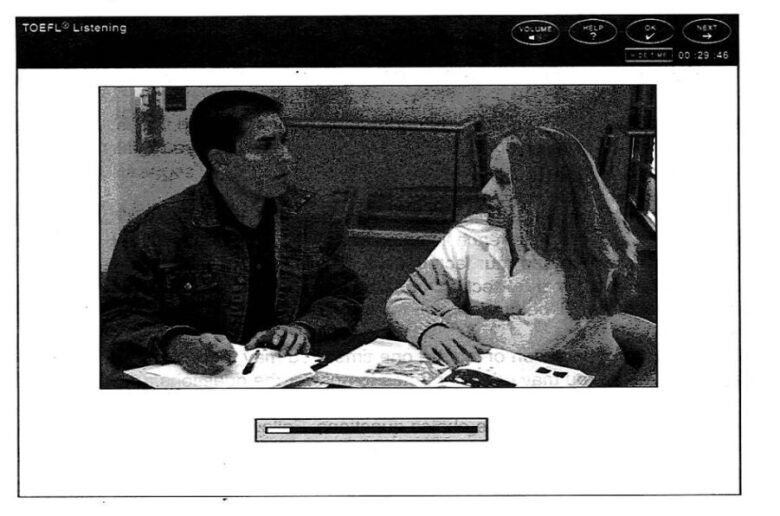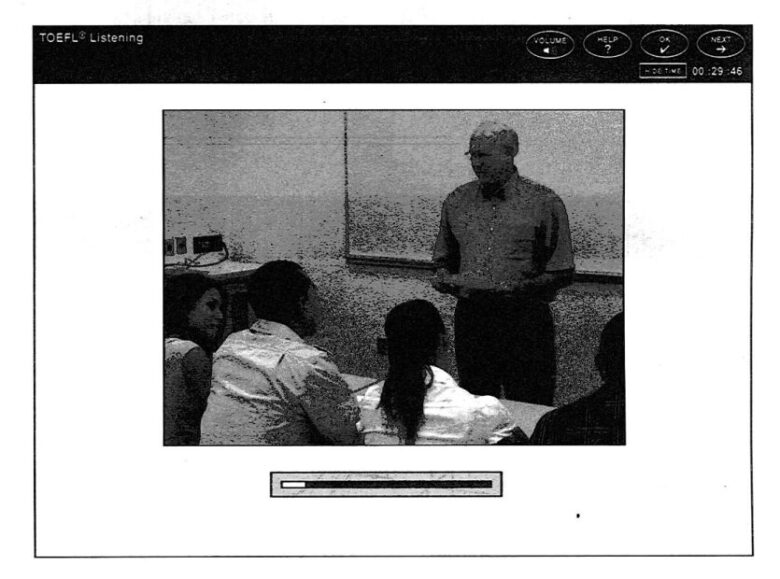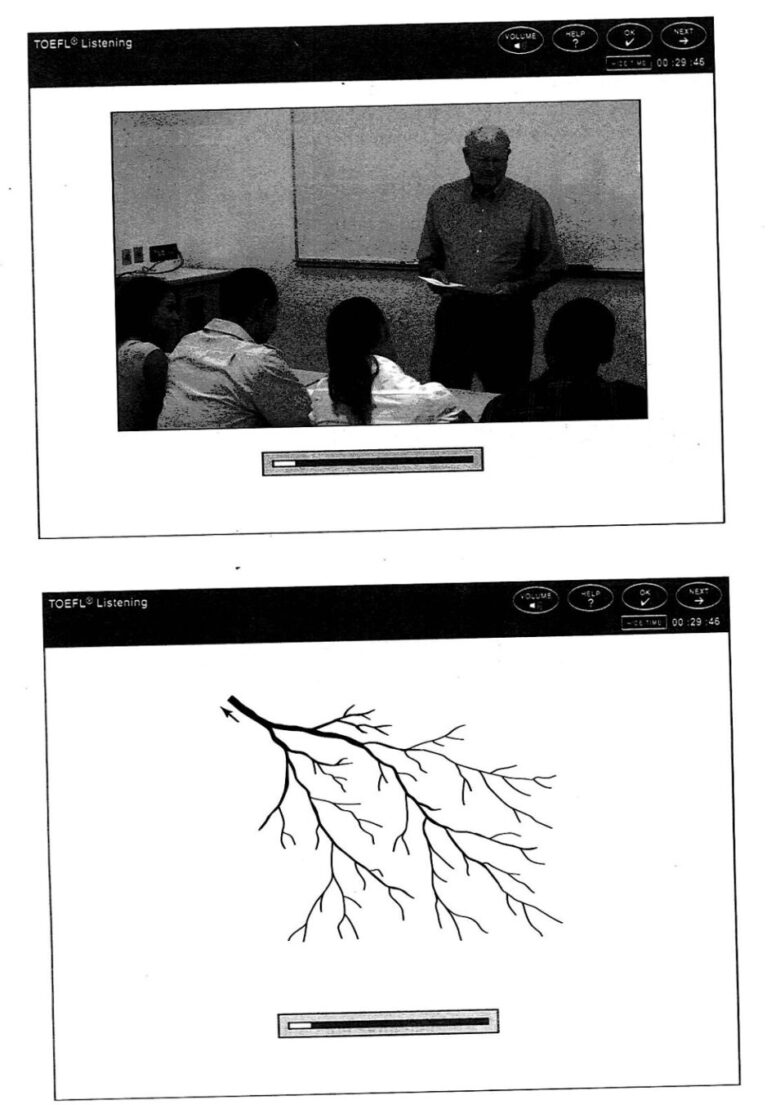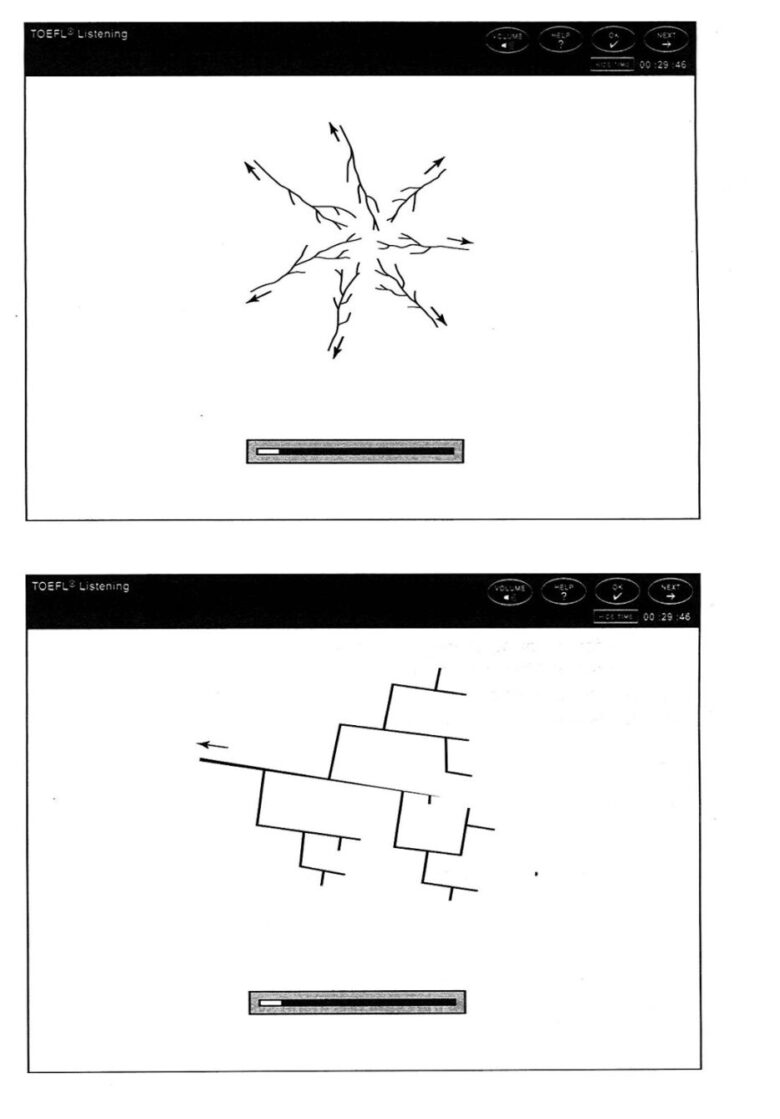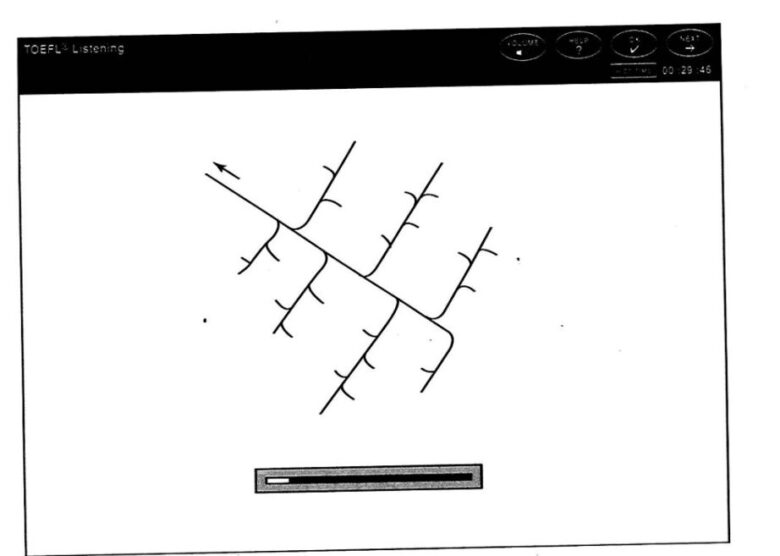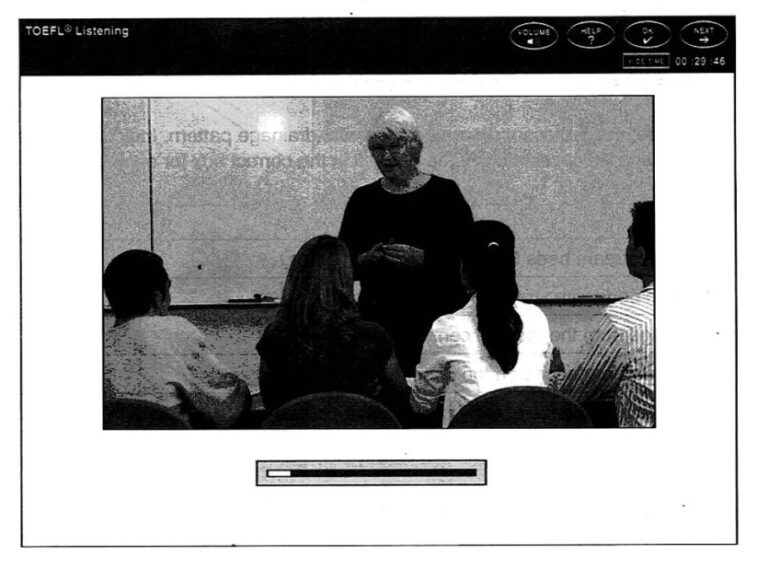TOEFL iBT Listening Practice Test 01 From Barron’s TOEFL iBT 13th Edition
The Listening section tests your ability to understand spoken English that is typical of interactions and academic speech on college campuses. During the test, you will listen to conversations and lectures and answer questions about them. There are two conversations and four lectures on the short format and three conversations and six lectures on the long format.
TOEFL iBT Listening Practice Test 01 Part 01
Audio PlayerTOEFL iBT Listening Practice Test 01 Part 02
Listening 1 “Learning Center”
A/ A meeting with Professor Simpson
B/An English composition class
C/An appointment for tutoring
D/ Information about the Learning Center
2. Why does the woman say this:
A/ She is worried that she cannot afford the service.
B/ She is trying to negotiate the cost of the sessions.
C/ She is showing particular interest in the man.
D/ She is expressing surprise about the arrangement.
3. Why is the man concerned about the woman’s attendance?
A/ If she is absent, her grade will be lowered.
B/ He will not get a paycheck if she is absent.
C/ She has been sick a lot during the semester.
D/ Her grades need to be improved.
4. What does the man agree to do?
A/ He will show the woman how to use the library.
B/ He will write some compositions for the woman.
C/ He will talk with the woman’s English professor.
D/ He will show the woman how to improve her writing.
5. What does the man imply about the woman’s teacher?
A. The professor is very difficult to understand.
B. He does not know where she came from.
C. Her students seem to like her teaching style.
D. He is familiar with her requirements.
Listening 2 ‘Geology Class”
6. What is this lecture mainly about?
A. A process for improving drainage systems
B. A comparison of different types of drainage systems
C. The relationship among the most common drainage systems
D. The changes that occur in drainage systems over time
7. Why does the professor say this:
A. To remind the students of the topic for today’s session
B. To indicate that he expects the students to read the textbook
C. To encourage the students to participate in the discussion
D. To demonstrate his respect for the students in his class
8. How does the professor introduce the dendritic drainage system?
A. By demonstrating how this very old system has evolved
B. By comparing it to both a tree and the human circulatory system
C. By criticizing the efficiency of the branches in the system
D. By drawing conclusions about the climate in the area
9. Why does the professor mention the spokes of a wheel?
A. To make a point about the stream beds in a trellis pattern
B. To contrast the formation with that of a rectangular one
C. To explain the structure of a radial drainage system
D. To give an example of a dendritic drainage system
10. In the lecture, the professor discusses the trellis drainage pattern. Indicate whether each of the following is typical of this pattern. Click in the correct box for each phrase.
| Yes | No | |
| A. Parallel stream beds flowing beside each other | ||
| B. Stream beds with sharp 90 degree turns | ||
| C. Drainage from the top of a central peak | ||
| D. Hard rock formations on top of soft rock formations | ||
| E. Geological evidence of folding with outcroppings |
11. What does the professor imply when he says this:
A. The test questions will be very difficult.
B. The students should read their textbooks before the test.
C. The basic patterns from the notes will be on the test.
D. The test will influence the final grade.
Listening 3 “Art Class”
12. What is the lecture mainly about?
A. The way that drawing has influenced art
B. The relationship between drawing and other art
C. The distinct purposes of drawing
D. The reason that artists prefer drawing
13. According to the professor, why do architects use sketches?
A. Architects are not clear about the final design at the beginning.
B. To design large buildings, architects must work in a smaller scale.
C. Engineers use the architect’s sketches to implement the details.
D. Sketches are used as a record of the stages in development.
14. What does the professor mean when she says this:
A. She is checking to be sure that the students understand.
B. She is expressing uncertainty about the information.
C. She is inviting the students to disagree with her.
D. She is indicating that she is in a hurry to continue.
15. Why does the professor mention the drawing of Marie Antoinette?
A. It is an example of a work copied in another medium.
B. Drawing was typical of the way that artists were educated.
C. The sketch was a historical account of an important event.
D. The size of the drawina made it an exceptional work of art.
16. What is the professor’s opinion of Picasso?
A. Picasso was probably playing a joke by offering drawings for sale.
B. At the end of his career, Picasso may have chosen drawing because it was easy.
C. Picasso’s drawings required the confidence and skill of a master artist.
D. Cave drawings were the inspiration for many of Picasso’s works.
17. According to the lecture, what are the major functions of drawing?
Click on 3 answer choices.
A technique to remember parts of a large work
A method to preserve a historical record
An example of earlier forms of art
An educational approach to train artists
A process for experimenting with media


